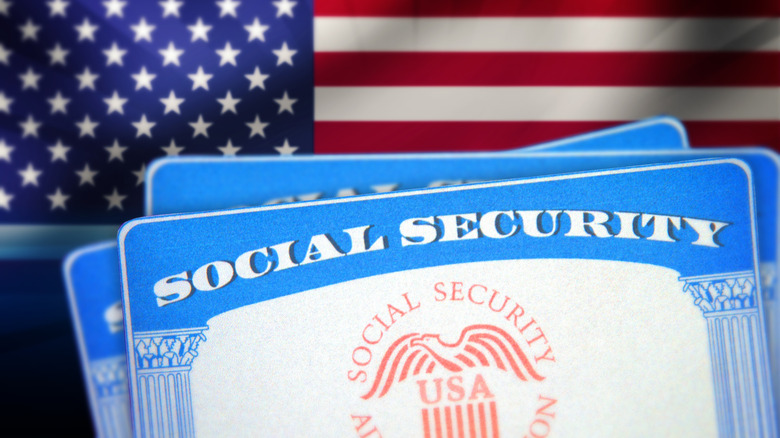Why You Should Never Laminate Your Social Security Card
We may receive a commission on purchases made from links.
Your Social Security number is your personal ID for all things official in the United States — so it makes sense you'd want to protect your Social Security card by laminating it to keep it safe from spills and tears. Yet, the Social Security Administration strongly advises against this because it can mess up some important security features, where if they're obscured, it makes it hard to check if your card is the real deal.
For instance, your Social Security card has a tamper-resistant background, ink that changes color, finely engraved details, and a pattern of yellow, pink, and blue circles. There is also a secret image that only shows up when you tilt it, and a special design that messes with photocopies. If you laminate it — heating and pressing the card — it can fade and warp these details, making it unreadable. It might even bubble up or wrinkle, hiding important info. So, while laminating might sound like a good shield, it could actually knock down your card's defenses.
Also, some of those lamination sheets do not get along with the ink on your card. They can make the ink smear, blur, or fade way before its time. And if the lamination job isn't top-notch, it might leave behind dirt, dust, or tiny air traps, which makes your card hard to read. All these issues can mess with your card's toughness and might force you to replace it sooner than you'd like.
Implications in everyday life
Laminating your Social Security card won't land you in legal trouble, but during a job application, a potential employer could flag it as an issue. When verifying your employment, companies often need to see your actual Social Security card as proof of identity for the Form I-9. The Social Security Administration (SSA) says laminated cards are acceptable under guidance during these checks, yet plastic or metal versions are a no-go because they change the card's appearance too much, making verifying the card's authenticity difficult.
Apart from employers, you might encounter a few issues from banks. Chase, for example, lists the Social Security card as one of the acceptable forms of identification for banking transactions, particularly for minors, seniors, or disabled persons. While some banks may allow alternatives like an Individual Taxpayer Identification Number (ITIN) for those who do not have a Social Security number, the preference and requirement for an unaltered original Social Security card remains consistent in many cases. If they can't verify the card, you're in for a long approval process.
You may also have problems at the Department of Motor Vehicles (DMV) or Social Security offices, who may refuse laminated cards when processing applications for identification, benefits, or other services. This can delay important processes and require additional steps to confirm your identity. A laminated Social Security card may raise concerns about potential tampering. If a government official or employer suspects that the document has been altered in any way, they may reject it and request further verification.
Instead of laminating, do this
There are safer ways to keep your Social Security card in good condition. Start by taking out of your wallet (it's one of many things you should never keep in your wallet). Then place it inside a plastic card sleeve like the Arjiekwei 3"X4" Card Sleeves. These transparent sleeves allow complete visibility of the card while shielding it from dirt, scratches, moisture, and other physical damages. Or you can keep it in a secure location at home in a safe like SentrySafe's Fireproof and Waterproof Safe Box, where you can also store important documents like your birth certificate, and other essential records. Do not make a digital copy of your Social Security card, the SSA does not accept digital copies as a replacement for the physical card.
If you have already laminated your Social Security card and it gets rejected, you may need to request a replacement. The SSA allows you to apply for a new Social Security card at no cost but you will need to provide proof of identity, such as a passport, driver's license, or other government-issued ID. Then, you will complete Form SS-5, which can be found on the SSA website. You can mail your completed application and documents to the SSA or visit your local Social Security office in person. Once your application is processed, a new Social Security card will be mailed to you.


